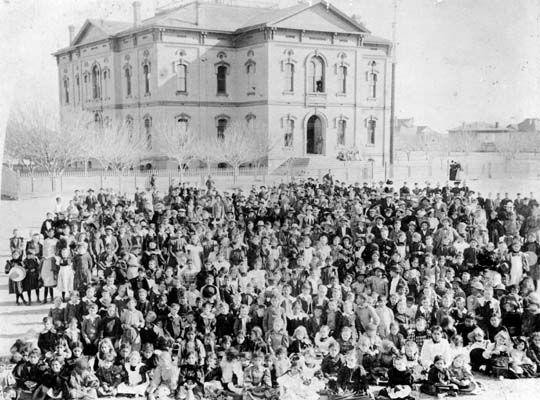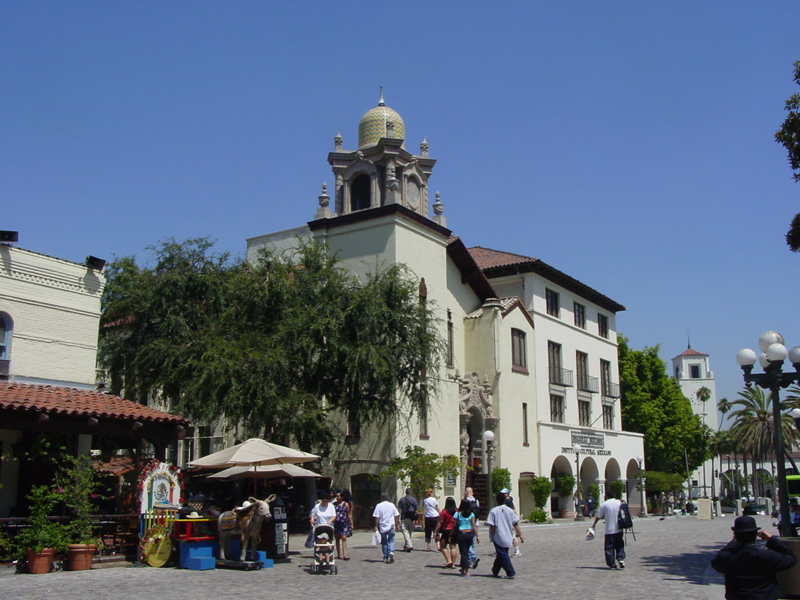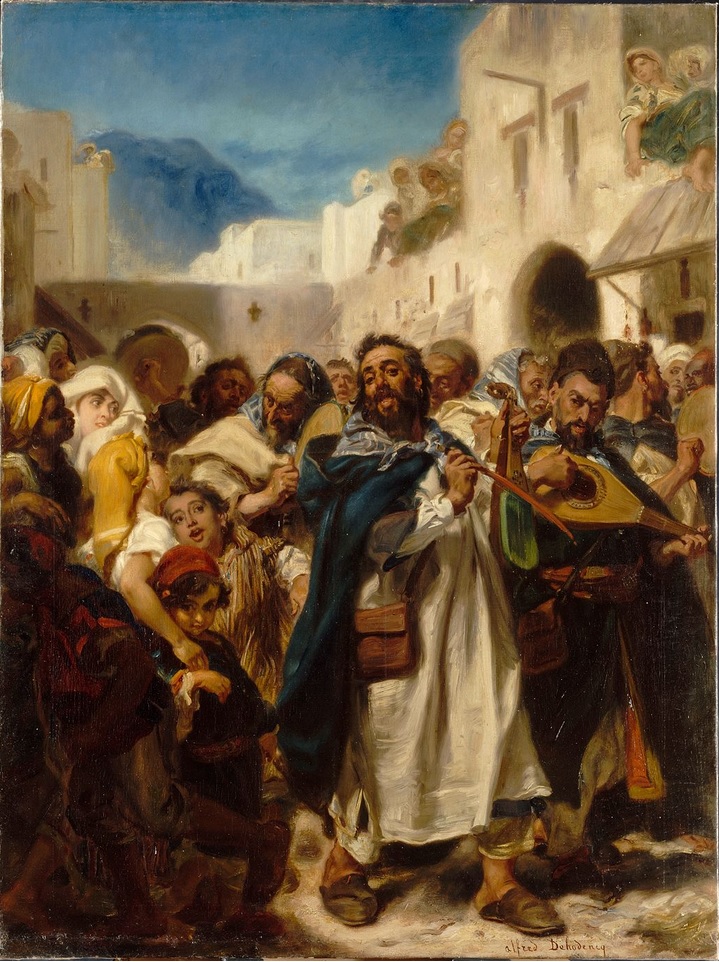|
California Institute For Yiddish Culture And Language
The California Institute for Yiddish Culture and Language (CYCL) started in 1999 and serves as a multi-generational center for the teaching, promotion, celebration and learning of Yiddish in all of its embodiments, with an emphasis on the arts and other areas that influence the cultural formations that inform its existence. The institute owes its establishment to Miriam Koral, who is the Founding Director, and who, as a Yiddish instructor at UCLA and native Yiddish speaker, created the center and community that brings world-renowned Yiddish authors, playwrights, musicians, poets, artists and others to the Los Angeles area. See also * Yiddishkeit Yiddishkeit ( yi, ייִדישקייט ) literally means "Jewishness", i.e. "a Jewish way of life". It can refer to Judaism or forms of Orthodox Judaism when used by religious or Orthodox Jews. In a more general sense, it has come to mean the "Je ... References External links California Institute for Yiddish Culture and Language {{DE ... [...More Info...] [...Related Items...] OR: [Wikipedia] [Google] [Baidu] |
Yiddish
Yiddish (, or , ''yidish'' or ''idish'', , ; , ''Yidish-Taytsh'', ) is a West Germanic language historically spoken by Ashkenazi Jews. It originated during the 9th century in Central Europe, providing the nascent Ashkenazi community with a vernacular based on High German fused with many elements taken from Hebrew (notably Mishnaic) and to some extent Aramaic. Most varieties of Yiddish include elements of Slavic languages and the vocabulary contains traces of Romance languages.Aram Yardumian"A Tale of Two Hypotheses: Genetics and the Ethnogenesis of Ashkenazi Jewry".University of Pennsylvania. 2013. Yiddish is primarily written in the Hebrew alphabet. Prior to World War II, its worldwide peak was 11 million, with the number of speakers in the United States and Canada then totaling 150,000. Eighty-five percent of the approximately six million Jews who were murdered in the Holocaust were Yiddish speakers, Solomon Birnbaum, ''Grammatik der jiddischen Sprache'' (4., erg. Aufl., ... [...More Info...] [...Related Items...] OR: [Wikipedia] [Google] [Baidu] |
UCLA
The University of California, Los Angeles (UCLA) is a public university, public Land-grant university, land-grant research university in Los Angeles, California. UCLA's academic roots were established in 1881 as a Normal school, teachers college then known as the southern branch of the California State Normal School (now San Jose State University, San José State University). This school was absorbed with the official founding of UCLA as the Southern Branch of the University of California in 1919, making it the second-oldest of the 10-campus University of California system (after UC Berkeley). UCLA offers 337 undergraduate and graduate degree programs in a wide range of disciplines, enrolling about 31,600 undergraduate and 14,300 graduate and professional students. UCLA received 174,914 undergraduate applications for Fall 2022, including transfers, making the school the most applied-to Higher education in the United States, university in the United States. The university is or ... [...More Info...] [...Related Items...] OR: [Wikipedia] [Google] [Baidu] |
Los Angeles
Los Angeles ( ; es, Los Ángeles, link=no , ), often referred to by its initials L.A., is the largest city in the state of California and the second most populous city in the United States after New York City, as well as one of the world's most populous megacities. Los Angeles is the commercial, financial, and cultural center of Southern California. With a population of roughly 3.9 million residents within the city limits , Los Angeles is known for its Mediterranean climate, ethnic and cultural diversity, being the home of the Hollywood film industry, and its sprawling metropolitan area. The city of Los Angeles lies in a basin in Southern California adjacent to the Pacific Ocean in the west and extending through the Santa Monica Mountains and north into the San Fernando Valley, with the city bordering the San Gabriel Valley to it's east. It covers about , and is the county seat of Los Angeles County, which is the most populous county in the United States with an ... [...More Info...] [...Related Items...] OR: [Wikipedia] [Google] [Baidu] |
Yiddishkeit
Yiddishkeit ( yi, ייִדישקייט ) literally means "Jewishness", i.e. "a Jewish way of life". It can refer to Judaism or forms of Orthodox Judaism when used by religious or Orthodox Jews. In a more general sense, it has come to mean the "Jewishness" or "Jewish essence" of Ashkenazi Jews in general and the traditional Yiddish-speaking Jews of Eastern and Central Europe in particular. According to The JC, "'Yiddishkeit' evokes the teeming vitality of the shtetl, the singsong of Talmud study emanating from the cheder and the ecstatic spirituality of Chasidim." Moreso than the word "Judaism," the word 'Yiddishkeit' evokes the Eastern European world and has an authentic ring to it. "Judaism suggests an ideology, a set of definite beliefs like socialism, conservatism or atheism. The suffix -keit in German, on the other hand, means -ness in English, which connotes ''a way of being.'' … Not merely a creed but an organic and all-encompassing, pulsing, breathing way of lif ... [...More Info...] [...Related Items...] OR: [Wikipedia] [Google] [Baidu] |
Ashkenazi Jewish Culture In Los Angeles
Ashkenazi Jews ( ; he, יְהוּדֵי אַשְׁכְּנַז, translit=Yehudei Ashkenaz, ; yi, אַשכּנזישע ייִדן, Ashkenazishe Yidn), also known as Ashkenazic Jews or ''Ashkenazim'',, Ashkenazi Hebrew pronunciation: , singular: , Modern Hebrew: are a Jewish diaspora population who coalesced in the Holy Roman Empire around the end of the first millennium CE. Their traditional diaspora language is Yiddish (a West Germanic language with Jewish linguistic elements, including the Hebrew alphabet), which developed during the Middle Ages after they had moved from Germany and France into Northern Europe and Eastern Europe. For centuries, Ashkenazim in Europe used Hebrew only as a sacred language until the revival of Hebrew as a common language in 20th-century Israel. Throughout their numerous centuries living in Europe, Ashkenazim have made many important contributions to its philosophy, scholarship, literature, art, music, and science. The rabbinical term ... [...More Info...] [...Related Items...] OR: [Wikipedia] [Google] [Baidu] |
Jewish Organizations Based In The United States
Jews ( he, יְהוּדִים, , ) or Jewish people are an ethnoreligious group and nation originating from the Israelites Israelite origins and kingdom: "The first act in the long drama of Jewish history is the age of the Israelites""The people of the Kingdom of Israel and the ethnic and religious group known as the Jewish people that descended from them have been subjected to a number of forced migrations in their history" and Hebrews of historical Israel and Judah. Jewish ethnicity, nationhood, and religion are strongly interrelated, "Historically, the religious and ethnic dimensions of Jewish identity have been closely interwoven. In fact, so closely bound are they, that the traditional Jewish lexicon hardly distinguishes between the two concepts. Jewish religious practice, by definition, was observed exclusively by the Jewish people, and notions of Jewish peoplehood, nation, and community were suffused with faith in the Jewish God, the practice of Jewish (religious) la ... [...More Info...] [...Related Items...] OR: [Wikipedia] [Google] [Baidu] |
Jewish Theatre
Jewish culture is the culture of the Jewish people, from its formation in ancient times until the current age. Judaism itself is not a faith-based religion, but an orthoprax and ethnoreligion, pertaining to deed, practice, and identity. Jewish culture covers many aspects, including religion and worldviews, literature, media, and cinema, art and architecture, cuisine and traditional dress, attitudes to gender, marriage, and family, social customs and lifestyles, music and dance. Some elements of Jewish culture come from within Judaism, others from the interaction of Jews with host populations, and others still from the inner social and cultural dynamics of the community. Before the 18th century, religion dominated virtually all aspects of Jewish life, and infused culture. Since the advent of secularization, wholly secular Jewish culture emerged likewise. History There has not been a political unity of Jewish society since the united monarchy. Since then Israelite populations ... [...More Info...] [...Related Items...] OR: [Wikipedia] [Google] [Baidu] |
Yiddish Culture In The United States
Yiddish (, or , ''yidish'' or ''idish'', , ; , ''Yidish-Taytsh'', ) is a West Germanic language historically spoken by Ashkenazi Jews. It originated during the 9th century in Central Europe, providing the nascent Ashkenazi community with a vernacular based on High German fused with many elements taken from Hebrew (notably Mishnaic) and to some extent Aramaic. Most varieties of Yiddish include elements of Slavic languages and the vocabulary contains traces of Romance languages.Aram Yardumian"A Tale of Two Hypotheses: Genetics and the Ethnogenesis of Ashkenazi Jewry".University of Pennsylvania. 2013. Yiddish is primarily written in the Hebrew alphabet. Prior to World War II, its worldwide peak was 11 million, with the number of speakers in the United States and Canada then totaling 150,000. Eighty-five percent of the approximately six million Jews who were murdered in the Holocaust were Yiddish speakers, Solomon Birnbaum, ''Grammatik der jiddischen Sprache'' (4., erg. Aufl., Hamb ... [...More Info...] [...Related Items...] OR: [Wikipedia] [Google] [Baidu] |
Cultural Infrastructure Completed In 1999
Culture () is an umbrella term which encompasses the social behavior, institutions, and norms found in human societies, as well as the knowledge, beliefs, arts, laws, customs, capabilities, and habits of the individuals in these groups.Tylor, Edward. (1871). Primitive Culture. Vol 1. New York: J.P. Putnam's Son Culture is often originated from or attributed to a specific region or location. Humans acquire culture through the learning processes of enculturation and socialization, which is shown by the diversity of cultures across societies. A cultural norm codifies acceptable conduct in society; it serves as a guideline for behavior, dress, language, and demeanor in a situation, which serves as a template for expectations in a social group. Accepting only a monoculture in a social group can bear risks, just as a single species can wither in the face of environmental change, for lack of functional responses to the change. Thus in military culture, valor is counted a t ... [...More Info...] [...Related Items...] OR: [Wikipedia] [Google] [Baidu] |





